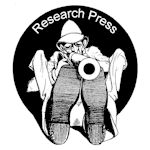The ASSRA in their Single Shot Rifle Journal (September / October 2021, pp. 18-19) published an interesting article on Joseph Partello’s long range score of 224 x 225, made in 1878. However, and irrespective of Partello’s obituary statement in 1934 that his record score has “existed since 1878”, it was equalled by others.
Partello’s score was not made in a match, but at practice. Several members of the Columbia Rifle Association weren’t satisfied with team results at Creedmoor. They determined the fault must be in the ammunition, not their ‘Remington Creedmoor’ rifles, so decided to change the method of loading the cartridges - sadly I have not been able to find reference to just what they did! Two members, Col. J.O.P. Burnside and J.M.T. Partello, went to Benning’s Range on 2 October 1878 to give it a full test. It was here that Partello made his score of 224 x 225, firing 15 shots at each distance, 800, 900 and 1000 yards.
Such was the interest in long range shooting at the time that the New York Herald report on the achievement was reprinted in The Times, London, on 16 October. Unsurprisingly, Remington used the NY Herald article in their advertising.
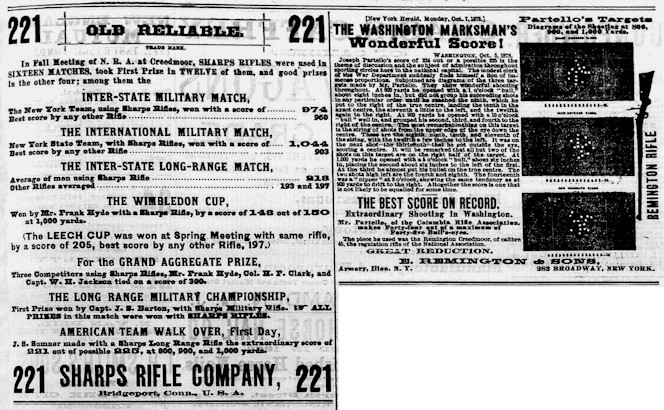
Sharps and Remington advertising from the NY Spirit of the Times, 21 December 1878.
The Sharps advert is embellished with '221' in reference to J.S. Sumner's score at Creedmoor.
Remington's advert includes the report of Partello's score of 224 x 225.
Frank Hyde, a noted rifleman and employee of Remington’s rival, Sharps, somewhat churlishly cast some doubt on the achievement, even making reference to Partello as “What’s-his-name.” Hyde’s letter to the Spirit of the Times of 19 October concluded with a challenge match with the young Partello for “any sum from $500 to $5,000.” The challenge was not taken up, despite only being aware of the challenge via the press, Partello observed that he was not permitted to shoot for money under Columbia Rifle Association rules, but would do so for the honor.
Later, sworn statements were published by witnesses confirming Partello’s score, including by J.O.P. Burnside, President of Columbia Rifle Association.
In September 1880 William Gerrish and a small number of riflemen met at Walnut Hill range, Mass., for competition at 800, 900 and 1000 yards, 15 shots at each distance. At both 800 and 900 yards Gerrish made 15 bull’s-eyes, each scoring 5. His penultimate shot at 1000 yards was a centre, scoring 4, but giving him a record breaking 43 consecutive bull’s-eyes. His final shot scored 5, for an aggregate score of 224 x 225. Gerrish used a Sharps rifle, and also won $150 in gold, offered by Sharps Rifle Company for beating the previous record of 221 by J.S. Sumner and J.F. Brown.
In August 1881 it was reported that W.C. Gregory had made a score of 224 x 225 at Walnut Hill, in the Victory long range match. Gregory’s eighth shot at 1000 yards scored a 4, while the remaining shots were bull’s-eyes. The “Victory Match” referred to was a series of competitions held broadly on a weekly basis from May to November 1881. Confusion arises here though as some later reports attribute the score to C.W. Hinman, and indeed in 1915 in a retrospective article on long range shooting Hinman refers to his making the score.
In October 1881 Prof. C.M. Bell, of the George H. Thomas Rifle Club in Chicago made a score of 224 x 225 at long range practice. His first shot at 800 yards was a centre, scoring 4. He followed this with 44 consecutive bull’s-eyes over the ranges 800, 900 and 1000 yards, beating Gerrish’s string of 43 bull’s-eyes, and for a final score of 224 x 225. I’ve not found what rifle Bell used.
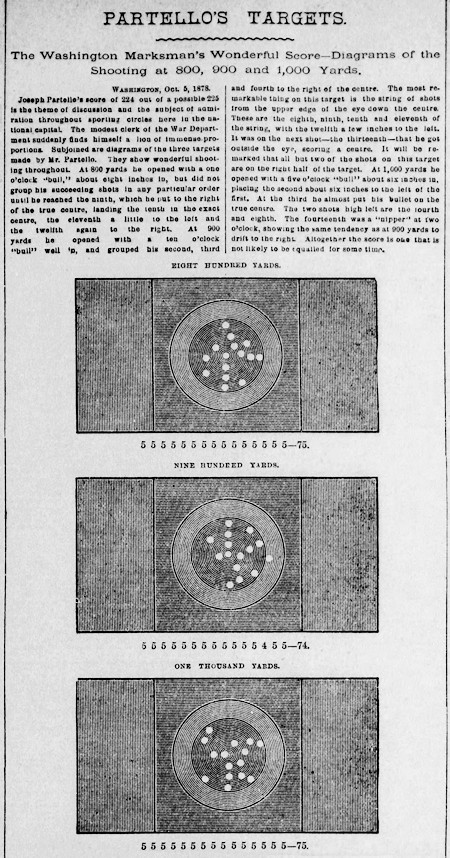 The New York Daily Herald
The New York Daily Herald
of 7 October 1878
published a report and
target diagrams of
Partello's shooting at
800, 900 and 1000 yards.
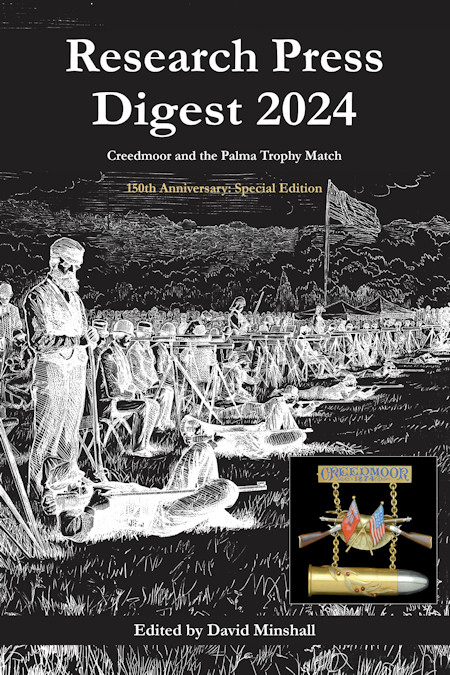 Research Press Digest
Research Press Digest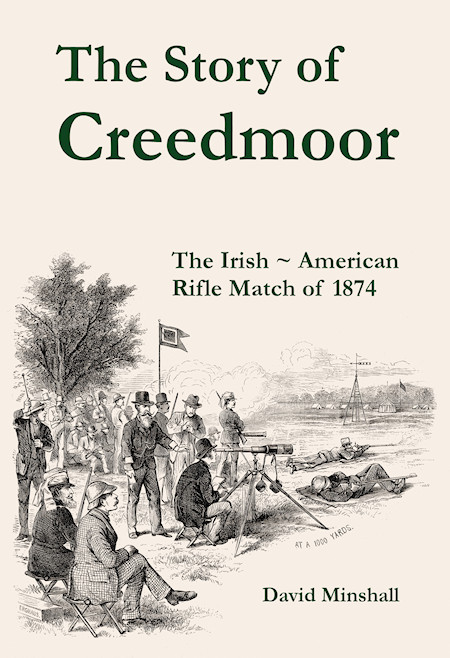 The Story of Creedmoor
The Story of Creedmoor